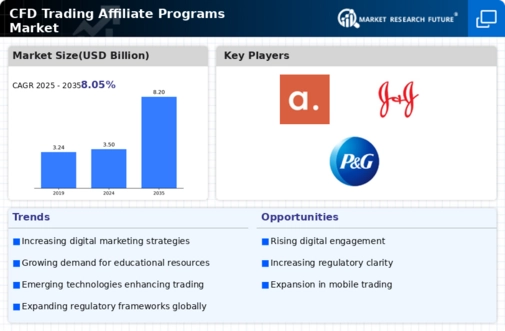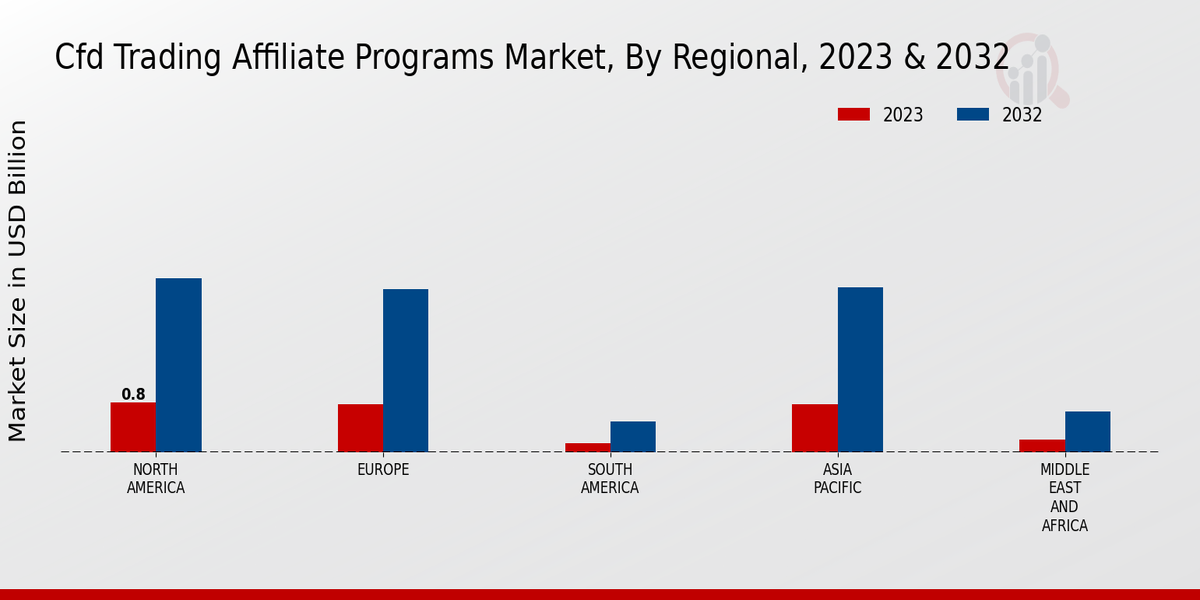Market Growth Projections
The Global CFD Trading Affiliate Programs Market Industry is poised for substantial growth, with projections indicating a rise from 3.5 USD Billion in 2024 to 8.2 USD Billion by 2035. This growth trajectory, characterized by a CAGR of 8.05% from 2025 to 2035, reflects the increasing interest in trading and the expansion of affiliate programs. The upward trend suggests that more individuals are likely to engage in CFD trading, thereby enhancing the role of affiliates in connecting traders with platforms. This growth presents opportunities for affiliates to innovate and adapt their strategies to meet the evolving needs of the market.
Regulatory Developments and Compliance
Regulatory frameworks significantly influence the Global CFD Trading Affiliate Programs Market Industry. As governments worldwide implement stricter regulations to protect investors, affiliates must adapt their strategies to remain compliant. This evolving landscape presents both challenges and opportunities for affiliate programs. Affiliates that prioritize transparency and adhere to regulatory standards are likely to gain trust and credibility among traders. The emphasis on compliance may lead to a more stable market environment, fostering long-term growth. As the market expands, affiliates that navigate these regulations effectively could see enhanced profitability and sustainability.
Increasing Popularity of Online Trading
The Global CFD Trading Affiliate Programs Market Industry is experiencing a surge in popularity as more individuals seek to engage in online trading. This trend is driven by the accessibility of trading platforms and the growing interest in financial markets. As of 2024, the market is valued at approximately 3.5 USD Billion, indicating a robust demand for affiliate programs that facilitate trading. The ease of entry into trading, coupled with the potential for high returns, attracts a diverse range of traders, from novices to experienced investors. This growing participation is likely to bolster the affiliate programs, enhancing their reach and effectiveness.
Rising Demand for Educational Resources
The Global CFD Trading Affiliate Programs Market Industry is witnessing a growing demand for educational resources aimed at traders. As more individuals enter the trading space, the need for comprehensive training and support becomes apparent. Affiliates that provide valuable educational content, such as webinars, tutorials, and market analysis, can attract a larger audience. This trend is particularly relevant as the market is expected to grow at a CAGR of 8.05% from 2025 to 2035. By positioning themselves as trusted sources of information, affiliates can enhance their value proposition and foster a loyal customer base.
Global Economic Trends and Market Volatility
Economic fluctuations and market volatility are key drivers of the Global CFD Trading Affiliate Programs Market Industry. Traders often seek opportunities during periods of uncertainty, leading to increased trading activity. Affiliates that can effectively market their services during these times may experience heightened engagement and conversions. The dynamic nature of global markets means that affiliates must stay informed and agile to capitalize on emerging trends. As the market evolves, those who can navigate economic challenges and provide timely insights are likely to thrive in this competitive landscape.
Technological Advancements in Trading Platforms
Technological innovations play a pivotal role in the Global CFD Trading Affiliate Programs Market Industry. The integration of advanced trading algorithms, mobile applications, and real-time data analytics enhances the trading experience for users. These advancements not only improve user engagement but also increase the efficiency of affiliate marketing strategies. With the market projected to grow to 8.2 USD Billion by 2035, the adoption of cutting-edge technology is essential for affiliates to remain competitive. As platforms evolve, affiliates can leverage these tools to attract and retain clients, ultimately driving growth in the industry.














